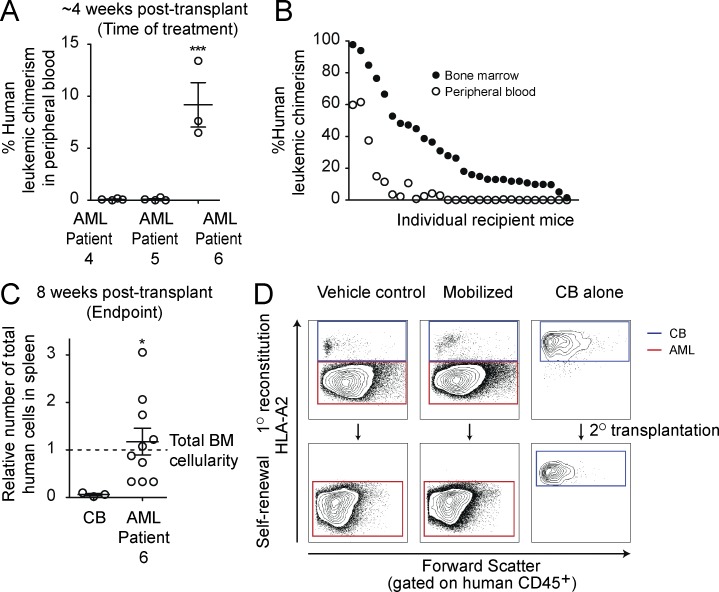Figure 5.
The leukemic burden at the time of mobilization-HSCT treatment influences therapeutic responses. (A) Circulating leukemic cell frequencies detected in PB at 3–4 wk post-disease initiation (when mobilization treatment and HSPC transplantation was performed). Each data point represents an individual mouse. ***, P < 0.0005, one-way ANOVA. (B) Matched PB and BM chimerism levels plotted from individual AML-engrafted mice analyzed at various time points after transplantation. Circulating blast levels increase dramatically once the leukemic infiltration of BM exceeds 50% chimerism. (C) The detection of substantial PB blast levels at 4 wk post-transplantation (shown in A) is related to an extremely aggressive course of disease culminating in 96 ± 1% leukemic chimerism in BM with extramedullary leukemic dissemination and dramatic splenomegaly by 8 wk post-disease initiation. The number of cells recovered from the spleens of mice transplanted with cells from AML Patient #6 approximated or even surpassed the cellularity from the entire BM (calculated according to Boggs, 1984). As a reference, the total abundance of human cells recovered from whole spleens is provided for CB-engrafted mice. *, P < 0.05, unpaired Student’s t test. (D) Representative flow cytometry plots gated on human CD45 showing detectable healthy (HLA-A2+) reconstitution in primary mice engrafted with AML Patient #6 cells and subsequently transplanted with healthy HSPCs. However, upon serial transplantation, HLA-A2+ CB cells failed to self-renew, suggesting inadequate niche colonization. Cell-intrinsic CB-HSPC deficits are ruled out by HLA-A2+ engraftment after serial transplantation of CB-alone controls. Plots are representative of 3–5 mice per group.

